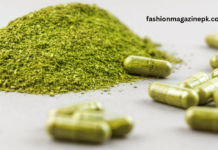In our world today, the use of hand sanitizer has become a predominant need. We are facing a situation where it is vitally important to always keep our hands sanitary. Therefore, people will go to stores to purchase hand sanitizer with the intent of preventing the disease from spreading. However, there are many different types available, some of which are natural, and they may wonder which type is best. If you are interested in purchasing hand sanitizer that is made from natural components, here are the benefits and drawbacks associated with using these cleansers.
What Is Standard Hand Sanitizer Made Of?
Contents
The components of hand sanitizer, specifically those that are sold in most stores, will include those that are made from bleach, ammonia, or even iodine. In some cases, combinations of these cleansers will be placed in the same product to help prevent the spread of germs and viruses. These components are distributed in some form of a gel or liquid. There are others that will be dispersed as a foam. The objective of all of these is to prevent infectious agents, that are on your hands, from causing any potential sickness or damage.
Are Hand Sanitizers Better Than Hand Wipes?
There is often a debate over whether or not the phone or liquid sanitizers or better than those that come with some type of a wipe. This is often debated, along with the use of soap and water, to thoroughly remove germs, bacteria, and viruses from your hands. According to the CDC, a minimum of 60% alcohol should be in all of the sanitizers that you are using. One of the most popular, used by hospitals, or those that are made by companies that utilize 70% ethyl alcohol. However, there are those that are not made by major companies that can produce equivalent results. These are often referred to as natural hand sanitizers.
What Are Natural Hand Sanitizers?
To produce a hand sanitizer that is not using alcohol or chemically base components, you will need to use natural oils that are known for their disinfecting capabilities. One of the most common is Melaleuca oil, also called tea tree oil, which is a natural disinfectant. It would likely be one of the most popular natural hand sanitizer Australian options that are available. It can easily prevent the spread of germs and disease. Lemon oil is another additive that is often found in natural hand sanitizers. Orange oil, which is also citrus, can provide similar results. The combination of these natural components will provide a comparable alternative to those that would prefer avoiding chemically-based hand sanitizers.
Can You Make Your Own Natural Hand Sanitizers?
One of the best ways to produce this on your own is to simply find some type of medium that can contain these oils. By simply adding several drops of tea tree oil, lemon oil, or orange oil into this mixture, you will have your very own hand sanitizer mix. You can simply use your favorite lotion that you prefer so that your hands do not become dry or cracked by using these components so often. Even though they are oils, you will likely be washing your hands regularly, and these natural disinfectants can help in keeping them soft.
Whether you choose to use chemically based hand sanitizers or natural ones, you are doing your best to keep yourself safe. If you would prefer not to use anything that is store-bought, or made with chemicals, you now know that alternatives do exist. By using the oils that are recommended, you can help prevent the spread of disease, not only to yourself but also to others. By creating them yourself, you will have full control over how potent they are, how they smell, and the base that you use to ensure your hands also stay soft.




